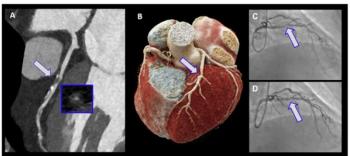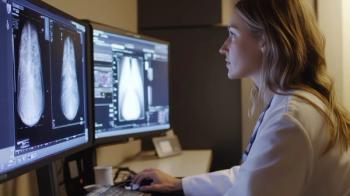
Fuji enhances PACS with 3D, readies handheld access
Fuji Medical USA has integrated 3D directly into its Synapse PACS, eliminating the need for thin-client 3D or dedicated 3D workstations accompanying its PACS. The newly integrated technology, dubbed Synapse 3D, was shown for the first time as a commercial product at RSNA 2010, accompanied by a work-in-progress application called Synapse Mobility that promises to allow access to Synapse PACS images and clinical tools using handheld devices.
Fuji Medical USA has integrated 3D directly into its Synapse PACS, eliminating the need for thin-client 3D or dedicated 3D workstations accompanying its PACS. The newly integrated technology, dubbed Synapse 3D, was shown for the first time as a commercial product at RSNA 2010, accompanied by a work-in-progress application called Synapse Mobility that promises to allow access to Synapse PACS images and clinical tools using handheld devices.
The key advantage of Synapse 3D is simplicity. It provides access to advanced visualization without the need for separate workstations. The new product offering is vendor-neutral and capable of handling data from any digital modality. Clinical tools address 2D, 3D, and 4D processing, dynamic imaging, fusion, and multiplanar reconstruction. Synapse 3D is also directly integrated into the company’s cardiovascular imaging system, Synapse Cardiovascular, although this is not yet FDA-cleared.
Synapse 3D is available at any workstation connected to Synapse PACS, including remote locations, such as home. It can be accessed with a single click from the Synapse power jacket or through “quick launch” mode.
A future complement to Synapse PACS and its 3D capability is Fuji’s work-in-progress Synapse Mobility, also shown at RSNA 2010. In final form, the zero-footprint application will provide access to the same high-quality interactive images that can be seen at a Synapse PACS workstation, according to Jim Morgan, Fujifilm vice president of medical informatics. Synapse Mobility is being developed to display interactive 3D images, not just static flash files, on iPads, iPhones, and Android Smartphones, as well as Macintosh- or Windows-based PCs. Images will be manipulated using zoom, window and level, and MIP/MPR with access to Synapse PACS, Synapse RIS, and Synapse Cardiovascular.
Fuji expects to begin selling Synapse Mobility in the first quarter of 2011 with downloads through the Apple Store.
Newsletter
Stay at the forefront of radiology with the Diagnostic Imaging newsletter, delivering the latest news, clinical insights, and imaging advancements for today’s radiologists.


























